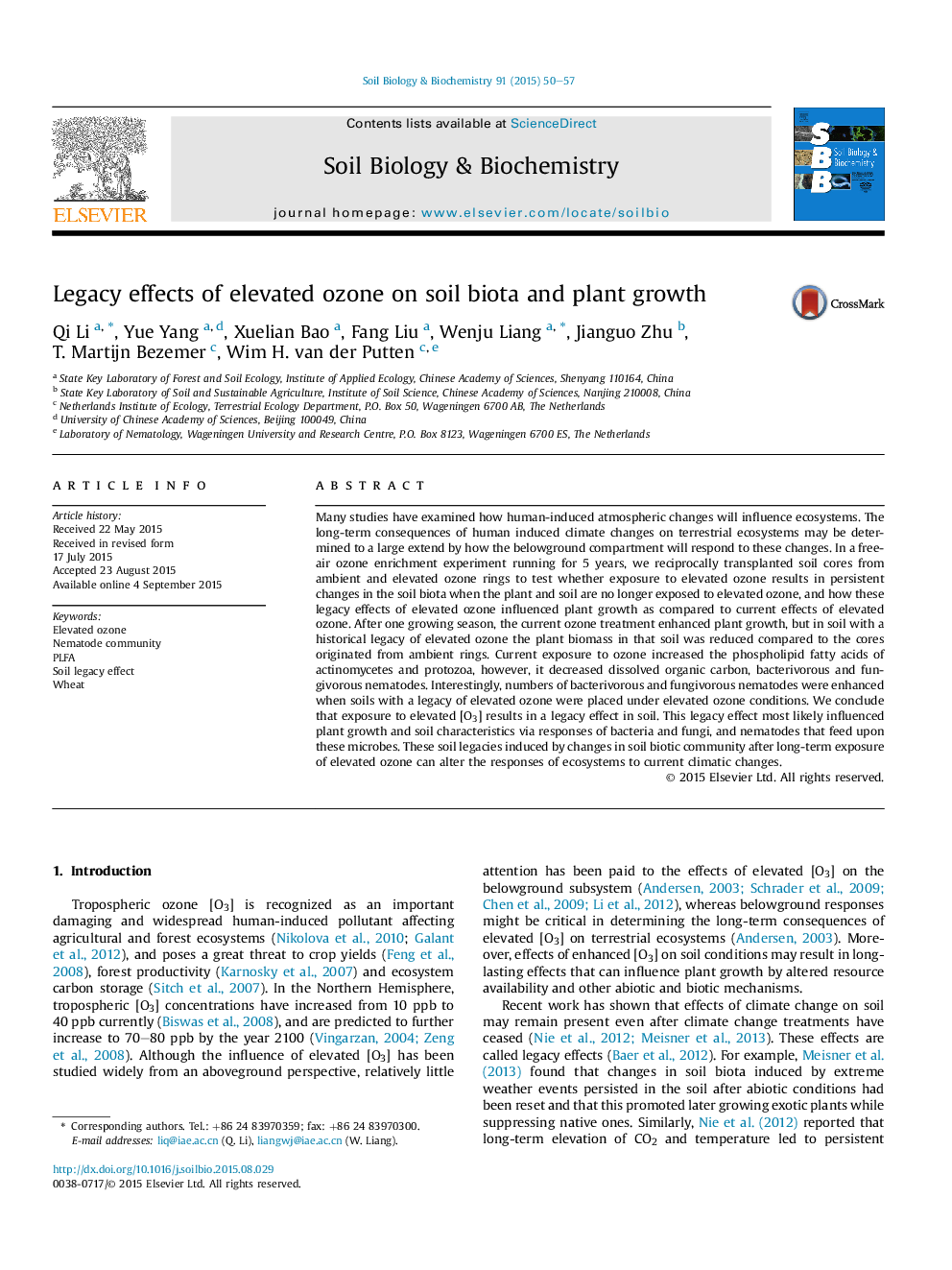| Article ID | Journal | Published Year | Pages | File Type |
|---|---|---|---|---|
| 8363744 | Soil Biology and Biochemistry | 2015 | 8 Pages |
Abstract
Many studies have examined how human-induced atmospheric changes will influence ecosystems. The long-term consequences of human induced climate changes on terrestrial ecosystems may be determined to a large extend by how the belowground compartment will respond to these changes. In a free-air ozone enrichment experiment running for 5 years, we reciprocally transplanted soil cores from ambient and elevated ozone rings to test whether exposure to elevated ozone results in persistent changes in the soil biota when the plant and soil are no longer exposed to elevated ozone, and how these legacy effects of elevated ozone influenced plant growth as compared to current effects of elevated ozone. After one growing season, the current ozone treatment enhanced plant growth, but in soil with a historical legacy of elevated ozone the plant biomass in that soil was reduced compared to the cores originated from ambient rings. Current exposure to ozone increased the phospholipid fatty acids of actinomycetes and protozoa, however, it decreased dissolved organic carbon, bacterivorous and fungivorous nematodes. Interestingly, numbers of bacterivorous and fungivorous nematodes were enhanced when soils with a legacy of elevated ozone were placed under elevated ozone conditions. We conclude that exposure to elevated [O3] results in a legacy effect in soil. This legacy effect most likely influenced plant growth and soil characteristics via responses of bacteria and fungi, and nematodes that feed upon these microbes. These soil legacies induced by changes in soil biotic community after long-term exposure of elevated ozone can alter the responses of ecosystems to current climatic changes.
Related Topics
Life Sciences
Agricultural and Biological Sciences
Soil Science
Authors
Qi Li, Yue Yang, Xuelian Bao, Fang Liu, Wenju Liang, Jianguo Zhu, T. Martijn Bezemer, Wim H. van der Putten,
